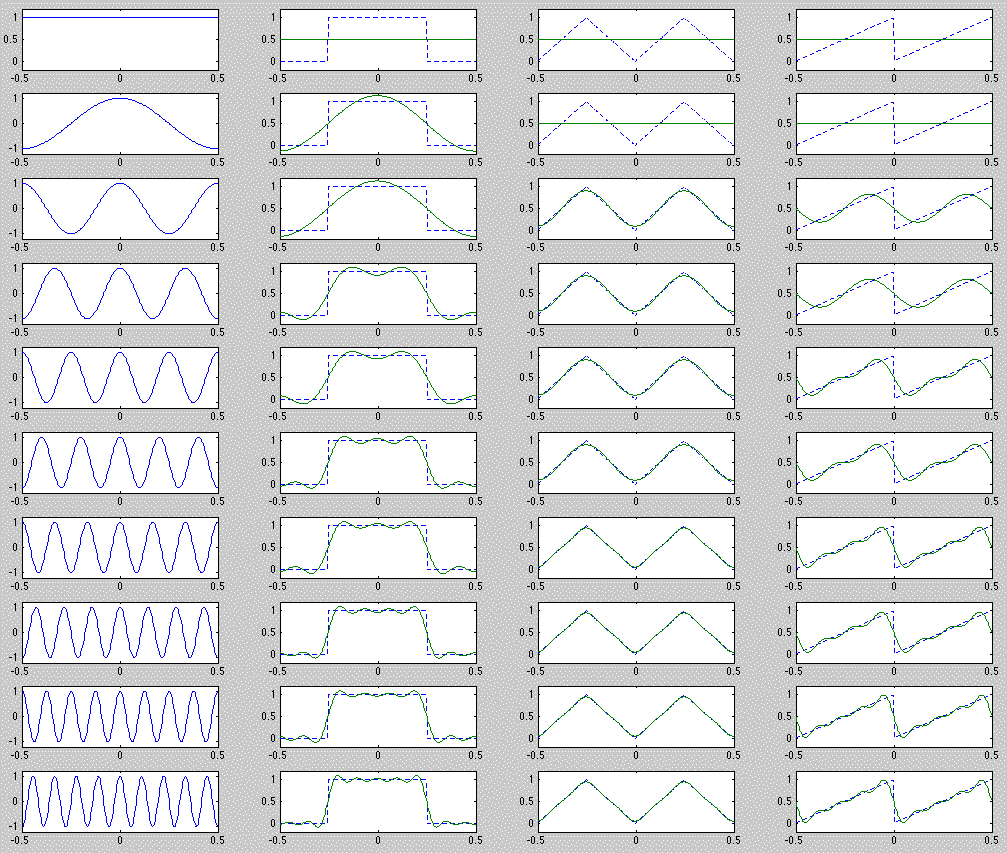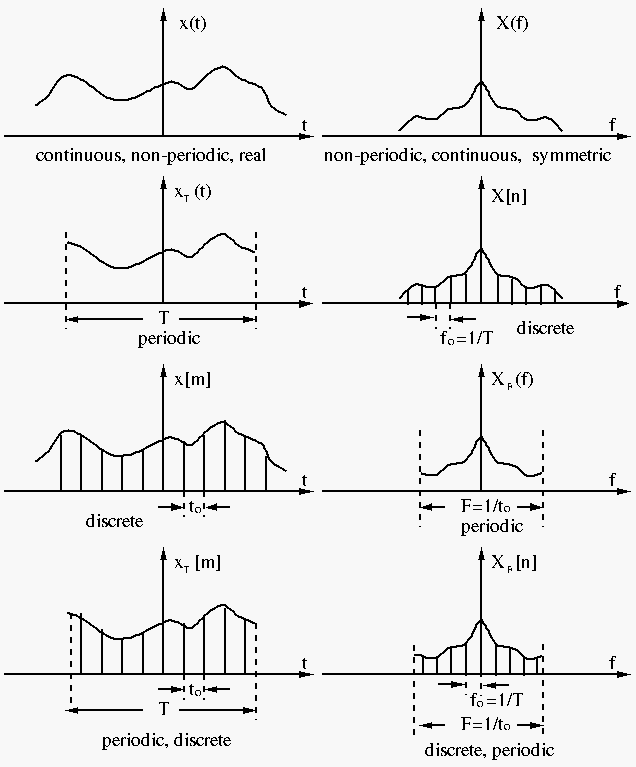This is the most general form of Fourier transform.
Alternatively, as
The first one is the forward transform, and the second one is the inverse transform.
The discrete time function can be considered as a sequence of samples
of continuous time function. The time interval between two consecutive
samples ![]() and
and ![]() is
is ![]() , where
, where ![]() is the sampling
rate, which is also the period of the spectrum in the frequency domain.
is the sampling
rate, which is also the period of the spectrum in the frequency domain.
The discrete time function can be written as
![\begin{displaymath}x(t)=\sum_{m=-\infty}^{\infty} x[m]\delta(t-mt_0) \end{displaymath}](img12.png)
and its transform is:
![\begin{displaymath}X_F(f)=\sum_{m=-\infty}^{\infty} x[m]e^{-j2\pi fmt_0},\;\;\;\...
... x[m]=\frac{1}{F} \int_{-F/2}^{+F/2} X_F(f) e^{j2\pi fmt_0} df \end{displaymath}](img13.png)
We can verify that the spectrum is indeed periodic:
![\begin{displaymath}X_F(f+kF)=X_F(f+k/t_0)=\sum_{m=-\infty}^{\infty}
x[m]e^{-j2\pi (f+k/t_0)mt_0}=X_F(f) \end{displaymath}](img15.png)
(for
This is the Fourier series expansion of periodic
functions. The time period is ![]() , and the interval between two
consecutive frequency components is
, and the interval between two
consecutive frequency components is ![]() , and its transform is:
, and its transform is:
![\begin{displaymath}X[n]=\frac{1}{T} \int_T x_T(t) e^{-j2\pi nf_0t} dt,\;\;\;\;\;\;
x_T(t)=\sum_{n=-\infty}^{\infty} X[n]e^{j2\pi nf_0t} \end{displaymath}](img22.png)
The discrete spectrum can also be represented as:
![\begin{displaymath}X(f)=\sum_{n=-\infty}^{\infty} X[n]\delta(f-nf_0) \end{displaymath}](img24.png)
We can verify that the time function is indeed periodic:
![\begin{displaymath}x_T(t+kT)=x_T(t+k/f_0)=\sum_{n=-\infty}^{\infty}
X[n]e^{-j2\pi nf_0(t+k/f_0)}=x_T(t) \end{displaymath}](img25.png)
(for

This is the discrete Fourier transform (DFT).
![\begin{displaymath}X[n]=\frac{1}{T}\sum_{m=0}^{N-1} x[m]e^{-j2\pi nmf_0t_0},\;\;\;\;\;\;
x[m]=\frac{1}{F}\sum_{n=0}^{N-1} X[n]e^{j2\pi nmf_0t_0} \end{displaymath}](img26.png)
Here

We therefore also have
The DFT can be redefined as
![\begin{displaymath}X[n]=\frac{1}{\sqrt{N}}\sum_{m=0}^{N-1} x[m]e^{-mn j2\pi/N}
...
...0}^{N-1} X[n]e^{mn j2\pi/N}
=\sum_{n=0}^{N-1} w_N^{-mn} X[n] \end{displaymath}](img32.png)
where
 .
.
We can easily verify that the time function and its spectrum are
indeed periodic: ![]() and
and ![]() .
.
Note that there are alternative ways for arranging the constant coefficients.
For example, one could define the forward transform without the coefficient
![]() , and have
, and have ![]() as the coefficient for the inverse transform.
as the coefficient for the inverse transform.
